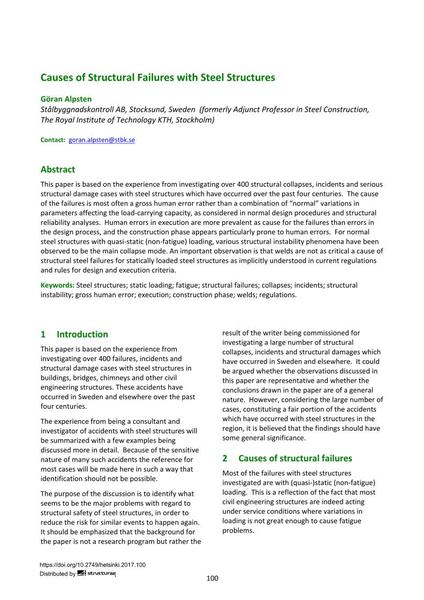| Medium: |
conference paper |
| Language(s): |
English
|
| Conference: |
IABSE Workshop: Ignorance, Uncertainty, and Human Errors in Structural Engineering, Helsinki, Finland, 15-16 February 2017 |
| Published in: |
IABSE Workshop Helsinki 2017 |
|
Page(s):
|
100-108
|
Total no. of pages: |
9 |
|
|
Page(s):
|
100-108
|
| Total no. of pages: |
9 |
| DOI: |
10.2749/helsinki.2017.100 |
|
Abstract:
|
This paper is based on the experience from investigating over 400 structural collapses, incidents and serious structural damage cases with steel structures which have occurred over the past four centuries. The cause of the failures is most often a gross human error rather than a combination of “normal” variations in parameters affecting the load-carrying capacity, as considered in normal design procedures and structural reliability analyses. Human errors in execution are more prevalent as cause for the failures than errors in the design process, and the construction phase appears particularly prone to human errors. For normal steel structures with quasi-static (non-fatigue) loading, various structural instability phenomena have been observed to be the main collapse mode. An important observation is that welds are not as critical a cause of structural steel failures for statically loaded steel structures as implicitly understood in current regulations and rules for design and execution criteria.
|
|
Keywords:
|
fatigue execution regulation construction phase static loading steel structures structural failures collapses incidents structural
instability gross human error welds
|

